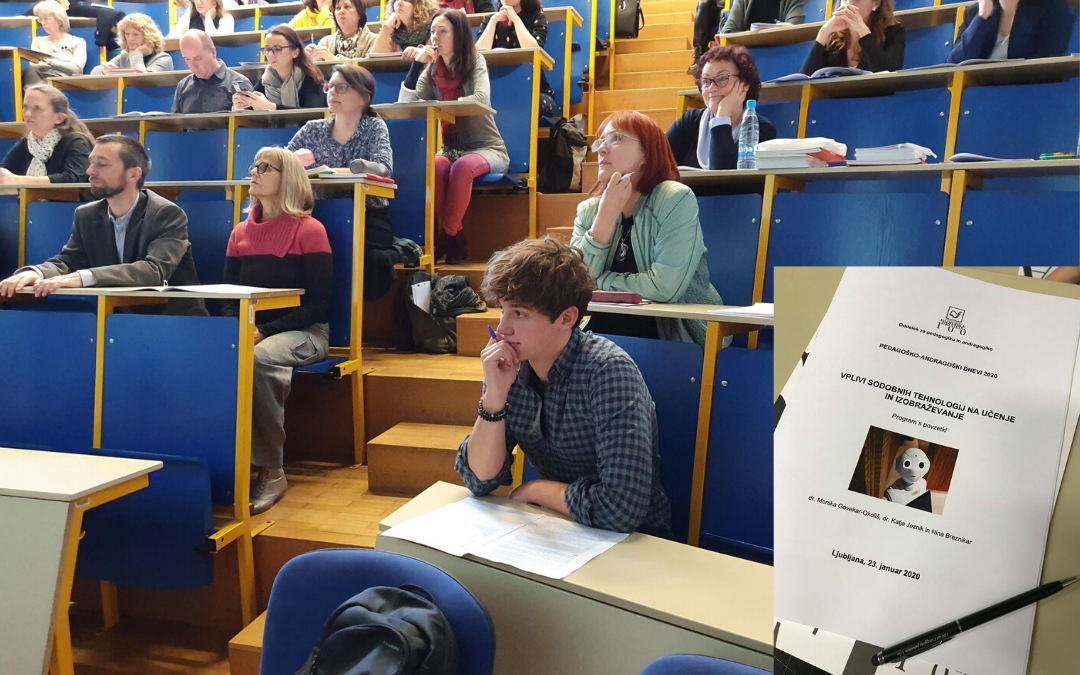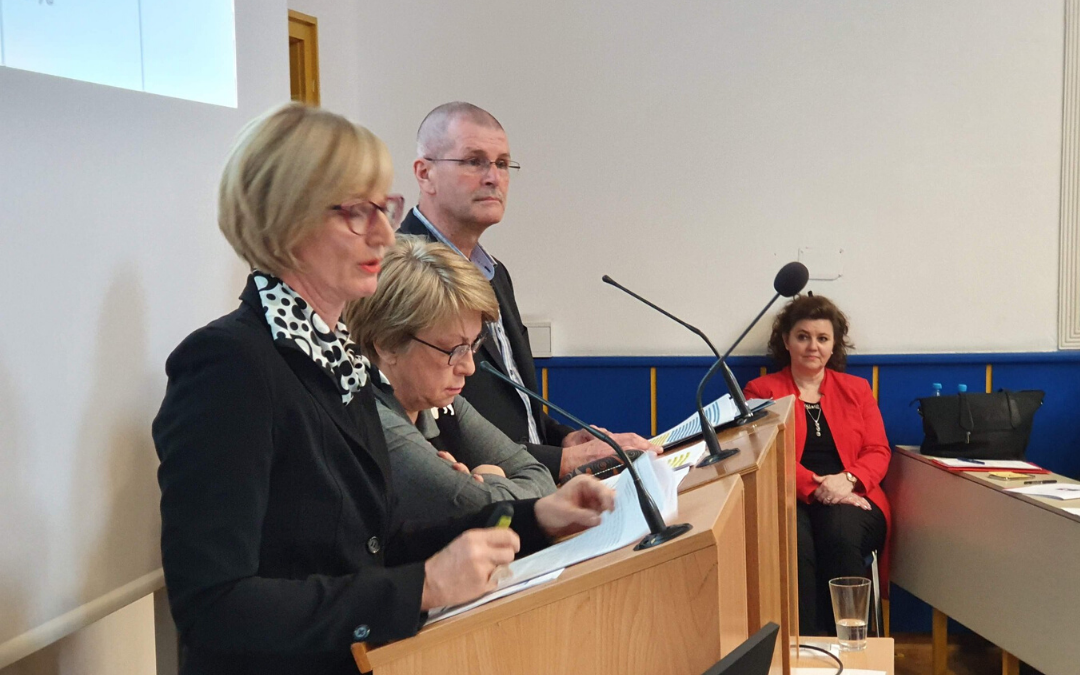For a number of years, the Faculty of Arts has been organising the Days of Pedagogy and Andragogy (PADs) – the main event of the Alumni Club of the Department of Educational Sciences. They have been organising meetings with graduates for over 40 years. This year, the event titled The Impacts of Modern Technologies on Learning and Education, took place on 23 January.
The topical title attracted many associates of the SIAE, as the event was attended by 11 of them. We listened with interest and took part in current and interesting topics that were put on the Programme (in Slovenian). Dr Marko Radovan debated whether an investment in ICT was also an investment in knowledge. ICT is becoming a part of our lives, which cannot be avoided. Experts’ opinions differ – does the introduction of technology into teaching (schools) have a positive or negative role, and how to incorporate it into lessons? Many draw attention to misplaced arguments for introducing ICT to schools, such as educating young people for the professions of the future that do not yet exist … Others point to its numerous negative impacts due to which a critical distance should be established. He emphasised that the problem was not in introducing technology into lessons, but in adapting didactics. Also interesting were the results of the survey among students of the Faculty of Arts, University of Ljubljana, who do not want ICT to be introduced into education, but would like a more genuine personal contact with the lecturers/professors.
This was followed by an equally interesting lecture by Dr Damijan Štefanc with a provocative title, which addressed the question of whether a machine could take the place of a teacher. What is the role of the teacher in this case? A teacher is not merely a dispenser of information and knowledge, but is also expected to forge a relationship with the students. In order for this “reaction” to occur, a human/pedagogical bond must be established between the two to allow for pedagogical guidance, direction, and character building of the student. Is this also possible between man and machine? The exact answer to this question cannot be written.
Dr Mojca Kovač Šebart, Dr Jasna Mažgon and Dr Miha Kovač presented the reading habits of students studying for the teaching professions. The results of the survey on reading habits, “The Book and the Readers” (the first one was carried out in 1979, the last in 2019, Slovenia participated in both), have shown that reading habits have been declining over the years. In the last 40 years, the percentage of non-readers has increased primarily among the educated population. Therefore, the authors were interested in what is happening with reading habits among Ljubljana students studying for teaching professions. Most answered that they read lighter texts and materials for personal growth, while fewer responded that they read more demanding literary works in their spare time. As reasons for not reading, they stated that they preferred to do something else, had no time, or had other priorities. The data on the use of e-books would also be interesting – whether readers opt for this type of reading, and what is their percentage.
PADs 2020 were well themed and implemented. I found it great that the lecturers polemicised about the content in terms of “multiple perspectives and concepts”, both theoretically and practically. Today, exploring the impact of modern technologies on learning and education is much more interdisciplinary and plural in theory and empirically and therefore requires a step forward in the development of approaches. The approaches should help identify the connections between the effects in the learning process and knowledge. Not only is modern technology applied as a tool in learning and education, but it inevitably accompanies us in our daily lives. With their contributions and concerns, the lecturers at PADs have steered us to contemplate this. It was excellent.
Dr Dan Podjed asked where we could hide in the digital world or panopticon, as he called the space that in the 18th century represented the central building for the control of prisoners, workers, mental patients, students … It is not much different today. In today’s modern society, we carry our smartphones with us – “tracking and listening devices”, which enable giant operators and businesses to determine our location and what we are doing. By posting selfies, we voluntarily communicate to the supervisory institutions what is happening in society. Digital technology enables our data to be constantly monitored, collected, and analysed. The humanistic and sociological sciences play a key role in finding answers to this topic. These pose major challenges for educational sciences.
In the afternoon, Dr Robi Kroflič highlighted the main topic of PADs with his lecture on integrating multimedia through art into education and learning. He was critical of modern digitalisation, which, through the overuse of computer games, the web, and social networks, undermines attention, imagination, and the thirst for knowledge. He also touched on the good side of using multimedia, which he perceives as a language of expressing one’s own ideas, feelings, and identity.
The topic of PADs was very relevant this year, as was evident from the reflections of the lecturers. Despite the concern about where technology is leading us, the lecture by Dr Ana Krajnc showed that learning in pairs is still the most intensive, and at the same time, the most elementary method. One will rather turn to a fellow being/mentor for knowledge, and only occasionally to technology, owing to a specific need.
Before the conclusion, time and space were devoted to examples of good practices in educational sciences. Dr Ana Krajnc presented the case of the U3A – voluntary learning of computer science in pairs, “You have the knowledge, pass it on to someone else”, knowledge as a gift that enriches both mentor and learner. The Žalec AEC introduced blended learning, and the use of ICT in the field of language education. An example developed with partners in the scope of the Erasmus+ Quality Blended Learning project was presented. The latest example of good practice was the project set up by students of the Department of Educational Sciences at the Faculty of Arts, dealing with intelligent ambience as the space where young people enter action research through their studies. The English Step-by-Step Project: a textbook for older adults, constituting an example of intergenerational learning as a form of older people’s education/learning, is underway, and an interactive textbook for English learning will be prepared and tested at two centres for the elderly in Koper and Ljubljana.
Neda Đorđević (neda.dordevic@acs.si), SIAE






